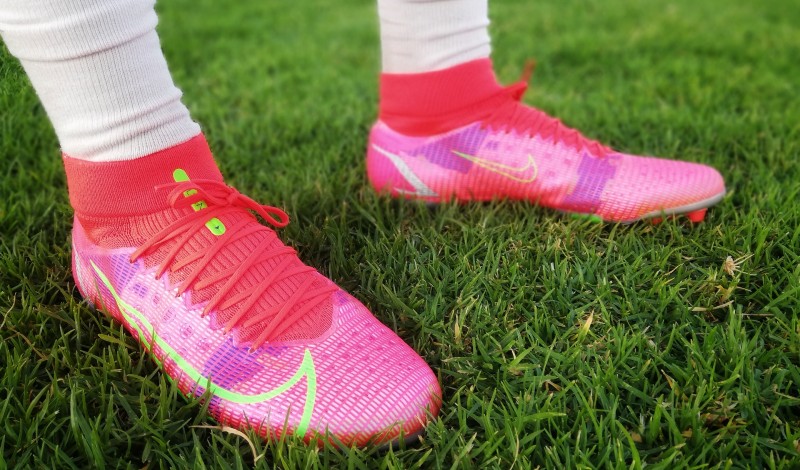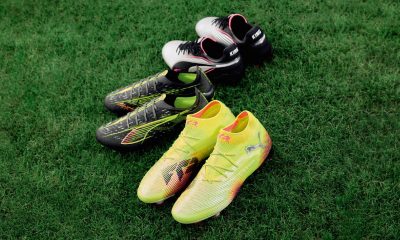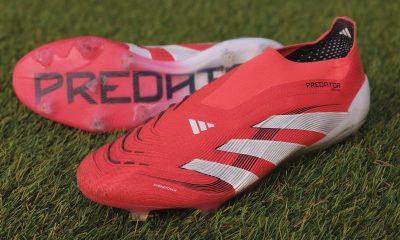Gear
Nike Mercurial Superfly 8 Pro AG Review – Should More Players Be Wearing AG Boots?
Does Nike’s revamped AG soleplate get the job done?
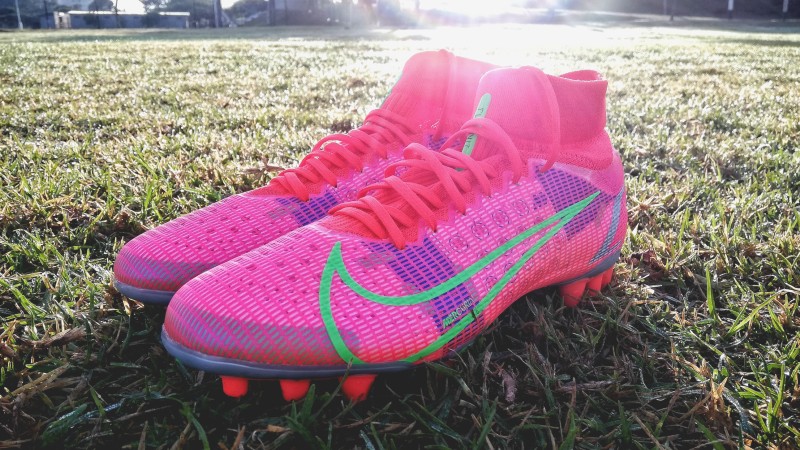
There seems to be a notion that Nike’s new AG soleplate is as useful as a doughnut-shaped spoon when it comes to using them on natural grass, but after getting our feet into some Nike Mercurial Superfly 8s, featuring the much-talked-about artificial ground soleplate, it’s safe to say that not only does the new stud pattern deliver the goods, but also result in one of the comfiest experiences you’ll find from the boot market.
Design
After a few years of sticking with a fully-knitted upper, Nike has taken a step backwards (but in doing so, made a huge leap forwards) by switching the construction of the Superfly 8 and Vapor 14 Pro models back to a synthetic upper. However, this isn’t the same material that you’d find on boots in years gone by. Nike has introduced something they’re calling ‘Vaporposite’, which is essentially some softer layers on the inner, wrapped together with a very strong mesh, that is actually extremely pliable and soft to the touch. It isn’t as immediately ‘soft’ as the Flyknit upper in previous models, but it arguably feels comfier from the inside. That said, there is still some Flyknit on the Superfly 8 Pro, with the collar still being the soft, knitted material, which does wrap the ankle nicely.
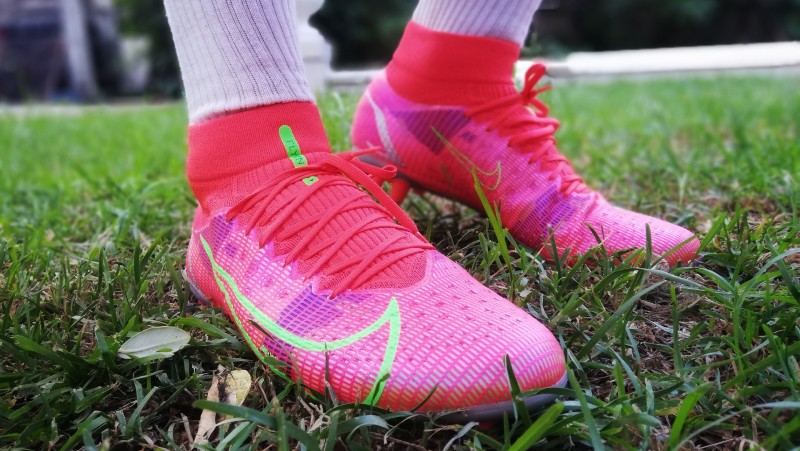
Looks-wise, the Superfly 8 has seen an overhaul, with the new ‘Crimson Red’ colourway edging closer to that of a richer pink. Nike has also slapped their swoosh (in a proud volt colour) back on the side in a much more visible and pronounced way. Due to the mesh, the upper is also relatively transparent, but this intentional, as Nike wanted to show wearers all the different portions of the boot that are made out of different materials, including the small holes which have been cut out on certain strips in order to drop the weight.
Fit
As for the boot’s fit, the anatomical shape is still there and the boots have pretty-much the same silhouette as previous Vapors and Superflys. There’s no doubt that it is one of the most snug-fitting boots on the market, and if you have particularly wide feet, you might want to steer clear. That said, the Pro models do have a slightly roomier toe-box than the top-tier and more expensive Elite model, so if you want a little extra wiggle room, the cheaper model might actually benefit you more.
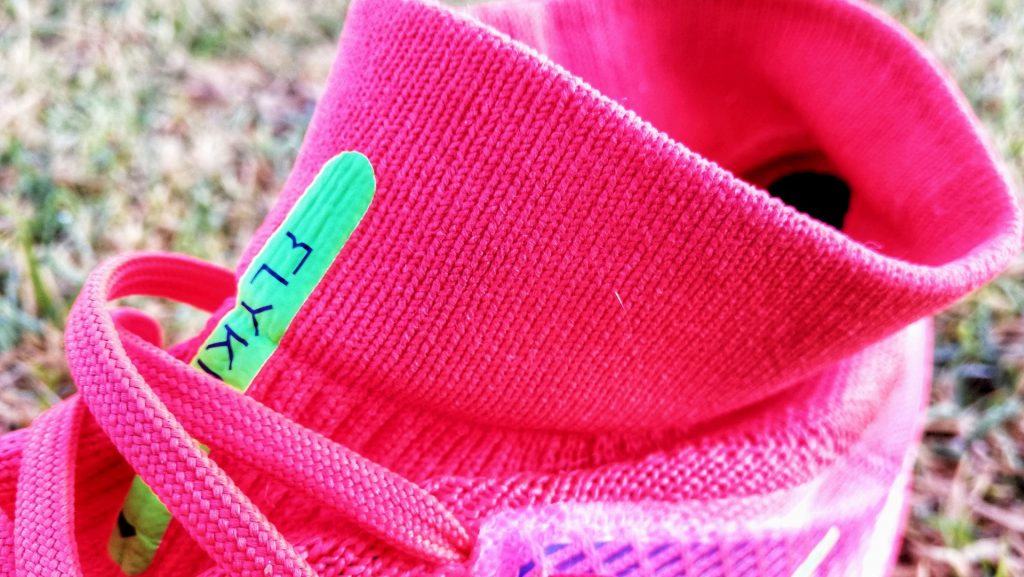
Outsole
This is where Nike’s new AG models get interesting. Designed for artificial turfs specifically, the AG boots have rather become quite the favourite of those who love the Mercurial Vapor or Superfly feel and fit, but find the typical chevron-shaped blades on the FG versions a little too aggressive. The more rounded, conical shapes of the AG models is much more forgiving on the joints and allows you to pivot and turn easier, whereas the FG model is built for out-and-out straight-running speed.
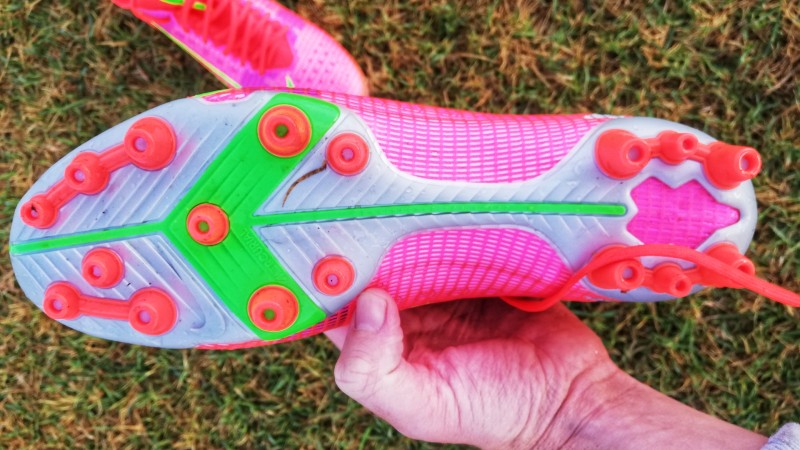
The Vapor 13 and Superfly 7 had what Nike called the ‘AG-Pro’ soleplate (we reviewed it here), which was basically a classic football stud plate with shorter, slightly-softer studs, and having two extra studs on the forefoot (a total of 8 rather than the usual 6). This provides less ‘sink’ into the ground and more stability.
This beloved layout has been tweaked on the Vapor 14 and Superfly 8 though, as the new studs aren’t just rounded though, as they have a more rubber feel to them (albeit slightly), and have a bit of flex, allowing for more absorption with impacts on the ground. They still have a hollow point to them, which is to aid the subtle flexibility and to disperse heat on AG turfs, but the orientation has changed quite drastically too.
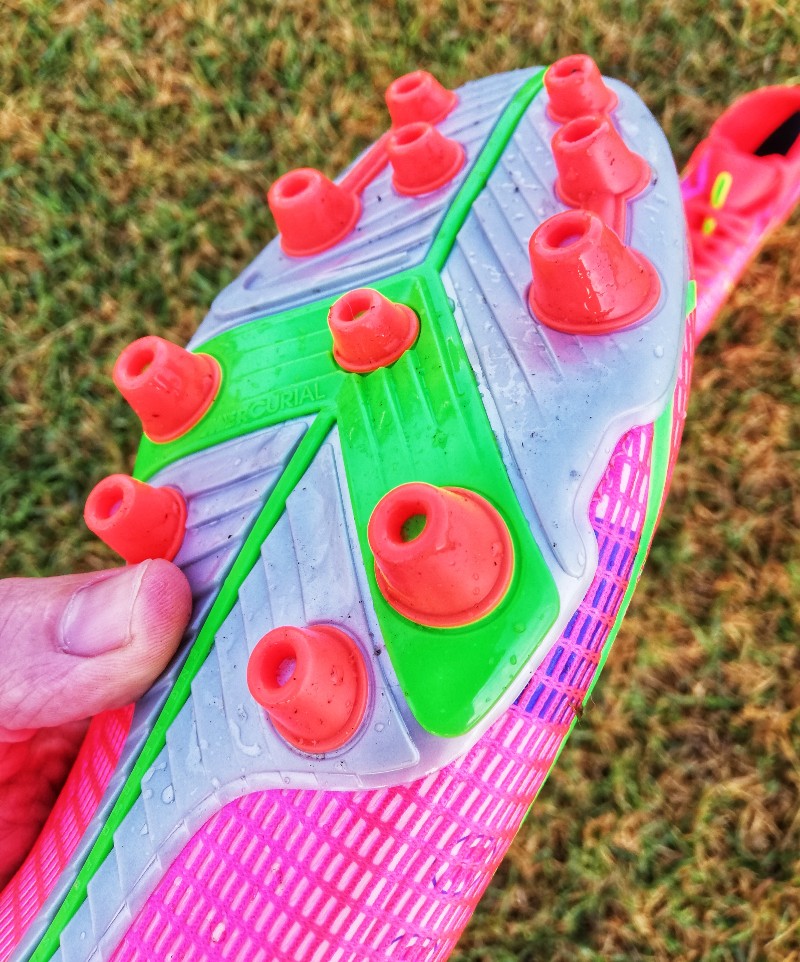
The stud-count has gone up from 8 to 10 on the forefoot, along with a stabilising conical stud in the middle instead of the typical blade. Furthermore, two stabilising studs have been added to the heel area also, for further stability and to ensure the studs don’t sink too deep and ‘bite’ too hard into the ground — you know, because more studs equal more weight distribution and less ‘sink’.
AG on Natural Grass?
Due to this, the concern was that these boots won’t get enough grip on natural grass; so, after giving them a good go on some slightly wet natural grass, how did they perform? Excellently, in fact. The extra studs undoubtedly provided some additional stability and the harder soleplate definitely delivered some more confidence with each plant of the foot. Grip wise, the boots held perfectly, with sidesteps and cuts feeling as sharp as with the previous AG-Pro layout, with no slippage happening at all.
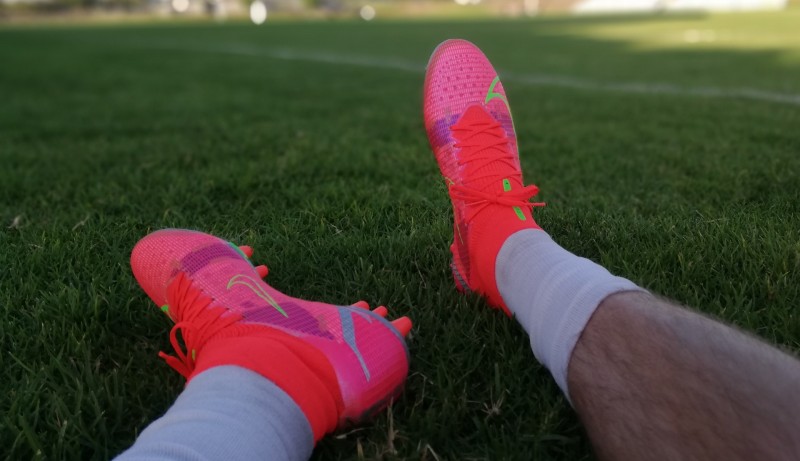
This stud pattern, while designed for artificial ground, is more than suitable for South Africa’s hard, dry fields, especially in summer, and also manage to perform well on slightly thicker (and even damp) grass, which is a huge plus. If you’re a player who does a lot cuts and sidesteps in football or rugby, perhaps it’s time to consider some AG boots?
Verdict
With its bold look and narrow chassis, the Nike Mercurial Superfly 8 Pro AG model might not be everyone’s cup of tea, but for those players who always loved the Mercurial range, want a speed boot that is lightweight and streamlined, but always felt like the studs are a bit too aggressive, look to the AG models. The studs might not be as visceral and sexy as on the FG variants, but what you get is a far safer, more well-rounded boot that delivers the good on artificial and natural grass.
The Nike Mercurial Superfly 8 Pro AG model is available from Nike.com for R1,899.
